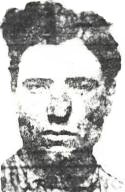This article needs additional citations for verification. (September 2023) |
 Joseph Ardizzone, the first boss of the Los Angeles family | |
| Founded | c. 1900s |
|---|---|
| Founder | Joseph Ardizzone |
| Founding location | Los Angeles, California, United States |
| Years active | c. 1900s–present |
| Territory | Southern California and Las Vegas |
| Ethnicity | Italians as "made men" and other ethnicities as associates |
| Membership (est.) | 15–20 made members (2003)[1] |
| Activities | Racketeering, loansharking, money laundering, murder, extortion, gambling, drug trafficking, fencing, fraud, prostitution and pornography[2] |
| Allies | |
| Rivals |
|
The Los Angeles crime family, also known as the Dragna crime family, the Southern California crime family[7] or the L.A. Mafia, and dubbed "the Mickey Mouse Mafia" by former Los Angeles Police Chief Daryl Gates,[8] is an Italian-American Mafia crime family based in Los Angeles, California as part of the larger Italian-American Mafia. Since its inception in the early 20th century, the family has spread throughout Southern California. Like most Mafia families in the United States, the Los Angeles crime family gained wealth and power through bootlegging alcohol during the Prohibition era. The L.A. family reached its peak strength in the 1940s and early 1950s under Jack Dragna, although the family was never larger than the New York or Chicago families. The Los Angeles crime family itself has been on a gradual decline, with the Chicago Outfit representing them on The Commission since the death of boss Jack Dragna in 1956.[9]
The sources for much of the current information on the history of the Los Angeles Cosa Nostra family is the courtroom testimony and the published biographies of Aladena "Jimmy the Weasel" Fratianno, who in the late 1970s became the second member – and the first acting boss – in American Mafia history to testify against Mafia members,[10] and The Last Mafioso (1981), a biography of Fratianno by Ovid Demaris. Since the 1980s, the Racketeer Influenced and Corrupt Organizations Act (RICO Act) has been effective in convicting mobsters and shrinking the American Mafia; like all families in the United States, the L.A. Mafia now only holds a fraction of its former power.[11] Not having a strong concentration of Italian Americans in the region leaves the family to contend with the many street gangs of other ethnicities in the city. The Los Angeles crime family is the last Mafia family left in the state of California.[12]
- ^ Lockyer, Bill (2003). "ORGANIZED CRIME IN CALIFORNIA" (PDF). CALIFORNIA DEPARTMENT OF JUSTICE. Archived from the original (PDF) on January 29, 2010. Retrieved January 23, 2010.
- ^
- Organized Crime Control Commission First Report California Attorney General Evelle J. Younger (May 1978) Archived March 15, 2023, at the Wayback Machine
- Organized Crime in California 1986 California Attorney General John Van de Kamp (June 1987) Archived June 28, 2023, at the Wayback Machine
- Organized Crime in California 2003 California Attorney General Bill Lockyer (2003) Archived February 8, 2006, at the Wayback Machine
- Not Entrenched Like Eastern Families: The L.A. Mob: Eking Out a Living Working Streets Kim Murphy, Los Angeles Times (June 29, 1987) Archived November 18, 2022, at the Wayback Machine
- ^ Roots of the Armenian Power Gang Richard Valdemar, policemag.com (March 1, 2011) Archived March 27, 2023, at the Wayback Machine
- ^ Les Gangs de Motards Criminalisés: Une expansion internationale Xavier Raufer, Institut de Criminologie de Paris Archived December 20, 2022, at the Wayback Machine
- ^ Chrystal, Chris (October 22, 1980). "Aladena 'Jimmy the Weasel' Fratianno boasted in a taped..." Los Angeles: UPI. Archived March 1, 2024, at archive.today
- ^ "The Prison Connection". Gate City Publishing. 2005.
- ^ "FIRST REPORT OF THE ORGANIZED CRIME CONTROL COMMISSION" (PDF). Attorney General, State of California. Retrieved 28 September 2021.
- ^ Murphy, Kim (March 30, 1988). "Rise and Fall of 'Mickey Mouse Mafia'". Los Angeles Times.
- ^ Murphy, Kim (June 29, 1987). "Not Entrenched Like Eastern Families – The L.A. Mob: Eking Out a Living Working Streets". Los Angeles Times. Retrieved January 25, 2010.
- ^ Capeci, Jerry (2002). The Complete Idiot's Guide to the Mafia. Alpha Books. pp. 92–93. ISBN 0-02-864225-2.
- ^ SELWYN RAAB, Special to The New York Times (1990-10-22). "A Battered and Ailing Mafia Is Losing Its Grip on America". The New York Times. New Orleans (La); New York City; New England States (Us); St Louis (Mo); Detroit (Mich); Kansas City (Mo); New Jersey; New York City Metropolitan Area; Milwaukee (Wis); United States; Philadelphia (Pa). Retrieved 2015-02-05.
- ^ Lungren 1997, p. 9